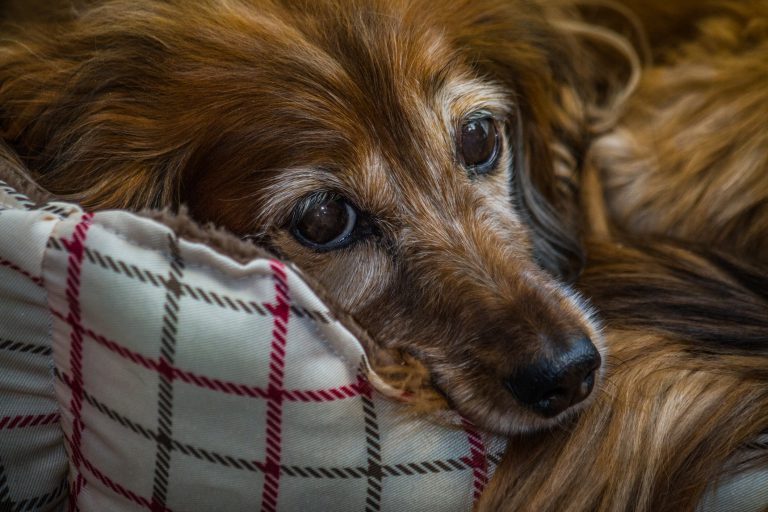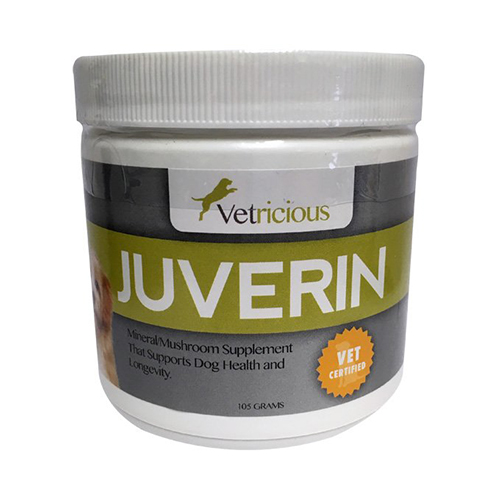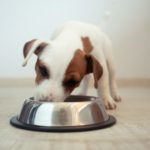87
Let’s face it! It makes you feel good to treat your pet to human food every once in awhile, right? Those puppy-dog eyes are hard to resist and it usually does not take long for your dog to convince you and you give in to their Let’s face it! It makes you feel good to treat your pet to human food every once in awhile, right? Those puppy-dog eyes are hard to resist and it usually does not take long for your dog to convince you.
Yet beware: Some human foods could actually harm him and cause some very dangerous health problems.
In fact, in 2015, the ASPCA’s Animal Poison Control Center received more than 130,000 calls. Most of these calls were cases of animal poisoning and were caused by the animal ingesting common human foods and household items.
So the truth is that many foods we enjoy can be very dangerous to our pets. When in doubt, stick to a high quality pet food that is as natural as possible with no preservatives, colored dyes or artificial colors and a diet recommended by your vet. Plus give him Juverin daily for an optimal efficient immune system.
Here are 11 of the most toxic foods that can harm your pet.
Remember, these are not the only harmful foods for your dog so be zealous in doing the research and talking to your Vet if you are not sure of how certain foods will react with your pet.
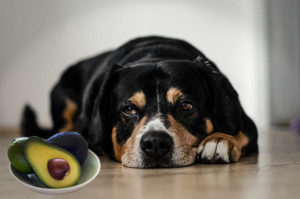 1. Avocados contain an extremely toxic component called persin. Persin is a toxin that can damage heart, lung and other tissue in many animals. This fruit is very toxic to dogs, cats and most animals.
1. Avocados contain an extremely toxic component called persin. Persin is a toxin that can damage heart, lung and other tissue in many animals. This fruit is very toxic to dogs, cats and most animals.
2. Alcoholic beverages can cause the same type of damage to an animal’s liver and brain as they do in humans. But the effects can be deadly to animals since they are much smaller than we are. Even a small amount of alcohol can cause vomiting and damage the liver and brain permanently.
3. Walnuts and macadamia nuts are especially toxic. Effects can range anywhere from vomiting, to paralysis, and eventually to death. Within 12 hours of eating the nuts, pets start to develop symptoms such as an inability to stand or walk, vomiting, hyperthermia (elevated body temperature), weakness, and an elevated heart rate. These symptoms can be even worse if your dog eats some chocolate with the nuts. The effect can cause kidney failure, often leading to death.
 4. Chocolate contains theobromine, which can kill your pet if eaten in large quantities. Dark and unsweetened baking chocolates are especially dangerous. Giving your pup a piece of chocolate cake or even letting him lick the chocolate icing on the cake could cause him to become ill.
4. Chocolate contains theobromine, which can kill your pet if eaten in large quantities. Dark and unsweetened baking chocolates are especially dangerous. Giving your pup a piece of chocolate cake or even letting him lick the chocolate icing on the cake could cause him to become ill.
Serious poisoning happens more frequently in domestic animals, which metabolize theobromine much more slowly than humans, and can easily consume enough chocolate to cause chocolate poisoning. If large numbers of filled chocolate candies are consumed, another serious danger is posed by the fat and sugar in the fillings, which can sometimes trigger life-threatening pancreatitis several days later.
The most common victims of theobromine poisoning are dogs for which it can prove to be fatal. The toxic dose for cats is even lower than for dogs. However, cats are less prone to eating chocolate since they are unable to taste sweetness. Theobromine is less toxic to rats, mice, and humans, who all have an LD of about 1,000 mg/kg.
In dogs, the biological half-life of theobromine is 17.5 hours; in severe cases, clinical symptoms of theobromine poisoning can persist for 72 hours.
Medical treatment performed by a veterinarian involves inducing vomiting within two hours of ingestion and administration of benzodiazepines or barbiturates for seizures, antiarrhythmic for heart arrhythmias, and fluid diuresis.
Theobromine is also suspected to induce right atrial cardiomyopathy after long term exposure at levels equivalent to ~15 g of dark chocolate per kg of weight and per day. Theobromine can also cause a dog or cat’s heart to beat very rapidly or irregularly, which could result in death if the pet is exercising or overly active.
According to the Merck Veterinary Manual, baker’s chocolate of approximately 1.3 g/kg (0.02 oz/lb) of a dog’s body weight is sufficient to cause symptoms of toxicity. For example, 0.4 ounces (11 g) of baker’s chocolate would be enough to produce mild symptoms in a 20-pound (9.1 kg) dog, while a 25% cacao chocolate bar (like milk chocolate) would be 25% as toxic as the same dose of baker’s chocolate. One ounce of milk chocolate per pound of body weight is a potentially lethal dose in dogs.
5. Candy or anything containing Xylitol (a common sweetener found in some diet products) can cause a sudden drop in an animal’s blood sugar, loss of coordination and seizures. Xylitol is often fatal to dogs.
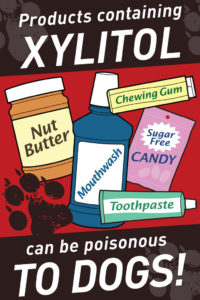 According to the ASPCA Animal Poison Control Center, the number of cases of xylitol toxicosis in dogs has significantly increased since the first reports in 2002. Dogs that have eaten foods containing xylitol (greater than 100 milligrams of xylitol consumed per kilogram of body weight) experience low blood sugar (hypoglycemia), which can be life-threatening.
According to the ASPCA Animal Poison Control Center, the number of cases of xylitol toxicosis in dogs has significantly increased since the first reports in 2002. Dogs that have eaten foods containing xylitol (greater than 100 milligrams of xylitol consumed per kilogram of body weight) experience low blood sugar (hypoglycemia), which can be life-threatening.
Low blood sugar can result in a loss of coordination, depression, collapse and seizures in as little as 30 minutes. Intake of doses of xylitol (greater than 500 – 1000 mg/kg bwt) has been implicated in liver failure in dogs, which can be fatal.
The possible cause of hypoglycemia experienced by dogs is that xylitol in chewing gum is released more slowly and absorbed over longer period than when it is consumed as a pure form.
6. Coffee, tea or any product that contains caffeine stimulates an animal’s central nervous and cardiac systems. This can lead to restlessness, heart palpitations and death, depending on the size of the animal and how much the animal consumes.
 7. Grapes and raisins can lead to kidney failure in dogs. As little as a single serving of raisins can kill them. And the effects are cumulative, which means that even if a dog eats just one or two grapes or raisins regularly, the toxin that builds in his system will eventually kill him.
7. Grapes and raisins can lead to kidney failure in dogs. As little as a single serving of raisins can kill them. And the effects are cumulative, which means that even if a dog eats just one or two grapes or raisins regularly, the toxin that builds in his system will eventually kill him.
8. Onions are another common food that can be highly toxic to pets. They can destroy an animal’s red blood cells and lead to anemia, weakness and breathing difficulties. Their effects are also cumulative over time.
9. Hide all medicines, whether prescribed or over the counter from your pets just like you would hide them from your children. The most common cause of pet poisoning is from animals ingesting a medicine or drug normally prescribed for humans. In many cases, pet owners give their feline and canine friends an over-the-counter medication to ease an animal’s pain.
But acetaminophen and ibuprofen, the active ingredients in many common pain relievers, are extremely toxic to dogs and cats. They can cause gastric ulcers, liver damage, kidney failure and sometimes death.
 10. High-fat meats, chicken skin and fat from steaks or roasts are not recommended. Ingestion may lead to gastrointestinal upset or even pancreatitis. This can be a very painful condition for dogs.
10. High-fat meats, chicken skin and fat from steaks or roasts are not recommended. Ingestion may lead to gastrointestinal upset or even pancreatitis. This can be a very painful condition for dogs.
In addition, most companion animals do not need extra fat in their diets.
Never give your pet meat with the bone in it. Animals can easily choke on the bones, and the bones can splinter as well.
11. TRASH – Sometimes, a dog’s own curiosity gets the better of them and raiding the aromatic trash may very well be his very first introduction to toxic human food. Dogs often raid trash cans because they smell food inside that they’ve tasted before — maybe it was given to them by their owner, or maybe they discovered it on their own.
The point is: once your dog has tasted human food, his curiosity is piqued and he will continue to want more of those same foods — especially when he catches even the slightest whiff of their aroma.
To prevent this type of behavior in your dog, your best bet is to keep human foods away from your dog. Otherwise, his “curiosity” for those will surely induce begging while you or any of your family is eating. And we know who the worst perpetrators are, don’t we?
Petricious Tip: We only give our dog, Thomas, food we know is healthy for him- But we NEVER Feed him at the table- we always put the food into his bowl and mix it in with the dog food!
Plus we always add a tablespoon of JUVERIN to his food to be certain he is getting the antioxidants and enzymes he needs to flush out any of theses toxic ingredients
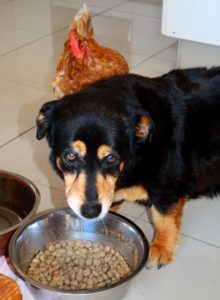 The Dog will go directly to those people who have fed them in the past! And worst case scenario: he might actually start poking around the garbage for the source of those smells that he is associated with.
The Dog will go directly to those people who have fed them in the past! And worst case scenario: he might actually start poking around the garbage for the source of those smells that he is associated with.
If at all possible, it’s important to start the “no table scraps rule” when your dog is a puppy. Once you do it consistently, your dog will stop begging and he will know what the rule is. Not only will this help you to control your own temptations but you could be saving the life of your dog as well.
On the other hand, if you regularly share table scraps with your pet, he will surely develop habits of begging, raiding the trash and stealing food off tables and countertops).
What Else I can Do To Protect My Pet From Toxic Foods?
A. Try to make a habit of not putting anything in the trash that could potentially harm your dog. Use the garbage disposal instead.
B. Inform your friends and family members not to give your dog any human scraps or treats. They will probably respect your decisions even more because they inherently know that what you are doing is protecting the health of your pet.
You may have younger children around as well who don’t realize the danger imposed to your dog by just giving him a bite of a hot dog….so it is important to take them aside and explain what the possible consequences could be if the dog gets any human food.
C. Party and Get together- Many unfortunate incidents have occurred when having a party at your home and the dog sneaks food off the table or something is dropped on the floor. Keep your dog in a separate area by himself to protect him against these situations. Common signs of poisoning include muscle tremors or seizures; vomiting and diarrhea; drooling; redness of skin, ears and eyes; and swelling and bleeding.
12. Raw Foods – Remember not to give your dog a diet that consists of raw foods. These are food items such as meat, poultry, milk, and eggs that have not been cooked, processed, or treated in order to remove harmful germs.
 These food items can carry extremely harmful bacteria including and Campylobacter and Salmonella. Salmonella may enter your pet’s digestive tract and cause abdominal pains and violent diarrhea.
These food items can carry extremely harmful bacteria including and Campylobacter and Salmonella. Salmonella may enter your pet’s digestive tract and cause abdominal pains and violent diarrhea.
If left untreated and in the severest of cases, may eventually cause death.
Campylobacter is a rod-shaped bacterium that causes infections. Unpasteurized milk infected with campylobacter is a common cause of gastroenteritis in dogs.
If you suspect your pet has consumed, inhaled or come in contact with a toxic substance, stay calm and call for help immediately. If you see your pet consuming anything you think might be toxic, seek emergency help even if she or he is not exhibiting any symptoms.
Keeping your veterinarian’s phone number or ASPCA emergency number on your refrigerator will come in handy if this happens.
The main thing is to find a holistic dog food program (including treats) free of GMO ingredients, preservatives, colored dyes and other chemicals and stick to it. Plus always add Juverin to his food daily! In the end, your dog’s health will remain stable and he will be able to fight off any bacteria and viruses much more effectively. And best of all, you have a happy, healthy dog.

